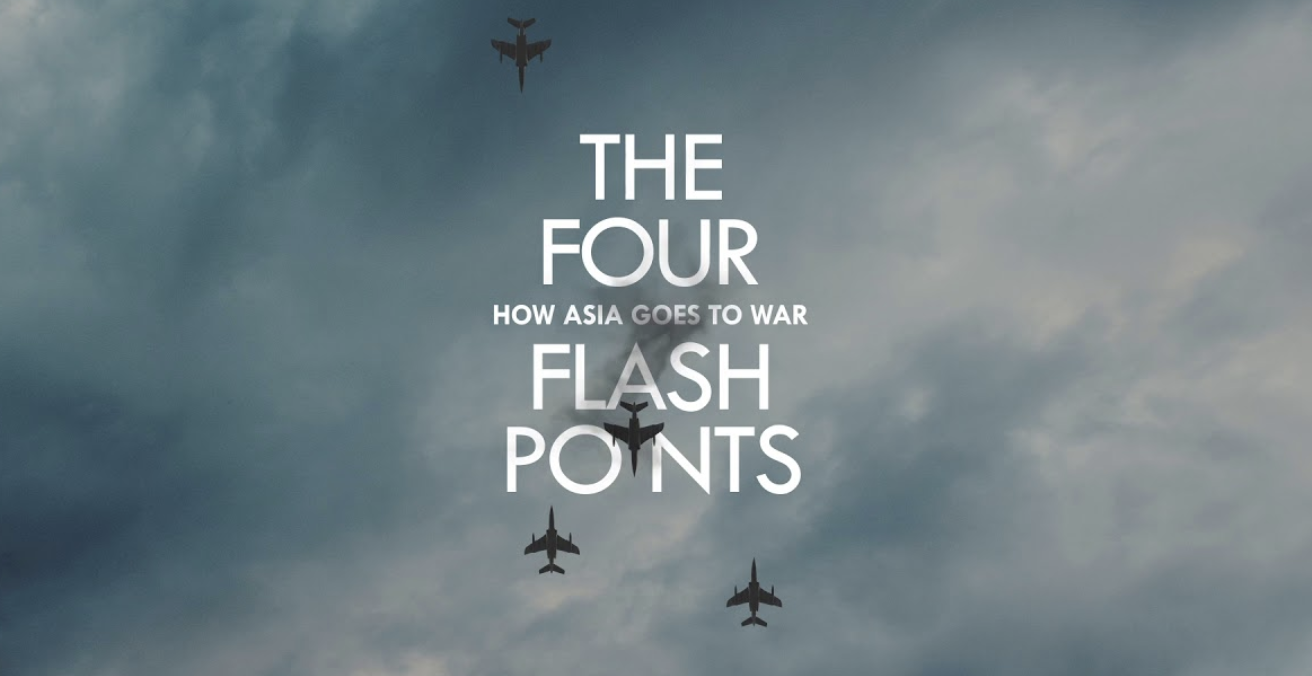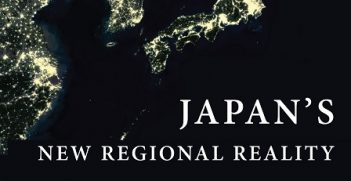Reading Room: The Four Flashpoints: How Asia Goes to War

Brendan Taylor’s The Four Flashpoints: How Asia Goes to War is a model of policy-engaged scholarship that should be required reading for anyone interested in understanding contemporary threats to peace in the Asia-Pacific region.
The Four Flashpoints engages three questions: “How probable is major war in Asia? Where is conflict most likely to originate? And what can be done to prevent it?”
Taylor answers these questions by arguing that “wide war” – a system-wide conflagration that draws in the region’s Great Powers – is an alarmingly likely possibility, not least because of widespread complacency regarding its supposed improbability. A region-wide “crisis slide” since 2010 – evident in accumulating tensions between the region’s powers – is a leading-edge indicator of this emerging threat.
Unresolved territorial conflicts, persistent historical grievances, Asian powers’ growing strength and impatience and increasing doubts over America’s continued capacity and resolve for regional leadership, provide potent structural preconditions for war in Asia. The existence of four critical flashpoints – centred on the Korean Peninsula, Taiwan and the East and South China Sea – meanwhile offer volatile (if varyingly dangerous) potential catalysts for conflict.
In light of the varying volatility of these flashpoints, Taylor assigns a “hierarchy of hazard” to them and counsels a recalibration of America’s regional security posture. One that fortifies its position of “situations of strength” (the Korean Peninsula and the East China Sea) while retrenching in areas (the South China Sea) where America’s core interests are not at risk, or where the dangers of intervention (Taiwan) increasingly outstrip the prospective benefits of doing so.
The Four Flashpoints is an exemplar of analytical clarity with enough theoretical rigor to satisfy scholars and sufficient succinctness and accessibility to attract and engage policy-makers and the general public. Four virtues of this volume, in particular, stand out.
First, Taylor’s analysis is admirably synoptic. One of the book’s great strengths is its capacity to think about the Asia Pacific as an integrated strategic system and to locate localised flashpoints within this larger systemic perspective.
Second, the individual chapters offer short but excellent historical backgrounds to Asia’s four flashpoints. These sketches wonderfully illuminate the common origins of Asia’s contemporary flashpoints in the unfinished character of regional order-building arrangements forged under the aegis of American hegemony after World War II. Additionally, they also offer the general reader a terrific primer for understanding the central role of contested historical memory in shaping contemporary grievances. This aids our understanding of the intense non-material motives that inflame regional disputes and that may in moments of crisis significantly constrain decision-makers’ efforts to extricate the region from war.
Third, beyond providing the reader with a panoramic vision of the region’s flashpoints, Taylor convincingly argues for a “hierarchy of hazard,” distinguishing the region’s most dangerous (Taiwan), least dangerous (South China Sea) and intermediate (Korea and the East China Sea) potential triggers for conflict.
In positing this hierarchy of hazard, Taylor avoids a pitfall all too common in “shopping list” analyses of regional geopolitics, which frequently imply an equivalency of risk across the region’s fault-lines. As Taylor demonstrates, each of Asia’s flashpoints periodically rise and fall in headline-grabbing prominence. It is only once we move beyond the second hands of history that we can properly recognise the varying degrees of peril these flashpoints represent, and thus the varying priorities they should justly claim on the attention of regional strategists.
Fourth, Taylor is not content merely to analyse Asia’s geopolitical dynamics. Rather, he also proposes concrete remedies for mitigating the imminent dangers of regional war. Specifically, Taylor argues that the United States should consolidate its position where it enjoys “situations of strength,” most particularly shoring up its alliance relationships in South Korea and Japan. Elsewhere – the South China Sea but more notably in America’s commitment to Taiwan – the United States should work only to uphold core common interests (for example, maintaining freedom of navigation in the South China Sea) while steadily winding back an increasingly risky commitment to protecting Taiwan against possible Chinese aggression. Crucially, Taylor does not argue here for “appeasement” (or more politely, “accommodation”) at a grand strategic level, but rather a steady adjustment of America’s posture with respect to the region’s most neuralgic flashpoint, and without prejudice to the United States broader commitment to the region.
The Four Flashpoints is admirable in the boldness, clarity and maturity of its policy prescriptions. Given the breadth of the book’s achievements, it seems almost churlish to push back on the latter. Nevertheless, in reading this book, the shadow of Donald Trump over US foreign policy looms large and raises predictable but unavoidable reservations regarding the feasibility of Taylor’s proposed recalibration.
Given the structural drivers for conflict and the volatility of the flashpoints Taylor so masterfully anatomises, a deft downsizing of US posture in the region seems necessary, if only to ensure that the risks America is willing to take to preserve regional security are commensurate with Washington’s core interests and likely long-term resolve. But to reassure allies while partially retrenching would require a level of diplomatic dexterity, communicative prowess and baseline consistency that seems beyond the skillset of the current administration.
More fundamentally, for nervous allies on the frontlines of Asia’s flashpoints, American retrenchment may in practice be difficult to distinguish from retirement. For this reason, managing allies’ expectations through continuous and consistent communication, and ultimately persuading them to directly assume greater responsibility to helping to maintain regional order, would be crucial for the success of Taylor’s proposal.
Arguing Cassandra-like for policy remedies to avoid imminent disaster is an eternal occupational hazard for academic strategists. But the risks are especially acute in an era when a former reality TV star sits at the helm of the regional alliance system. That said, Taylor is compelling in the incisiveness of his analysis, the persuasiveness of his prescriptions and the clarity with which he communicates both.
The Four Flashpoints is a model of public-facing and policy engaged scholarship and a must-read for everyone concerned about our region’s continuing peace and prosperity. One can only hope that the current resident of 1600 Pennsylvania Avenue is willing to pay heed to Taylor’s wise counsel…perhaps Professor Taylor could proffer a condensed version written in tweets?!
Brendan Taylor, The Four Flashpoints: How Asia Goes to War (Melbourne: La Trobe University Press, 2018)
Andrew Phillips is an associate professor of International Relations and Strategy in the School of Political Science and International Studies at the University of Queensland. He is most recently the co-author (with Prof J.C. Sharman) of International Order in Diversity: War, Trade and Rule in the Indian Ocean (Cambridge University Press: 2015).
This article is published under a Creative Commons License and may be republished with attribution.





